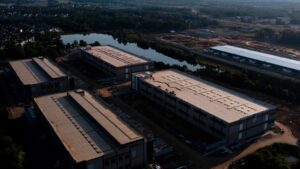How AI Could Hinder the Path to a Fair Transition

Understanding the Foresight Gap in Climate Resilience
The Role of AI in Agriculture
In parts of East Africa, artificial intelligence (AI) tools are making significant strides in predicting rainfall, identifying crop failures, and assessing soil degradation. Innovations from agritech startups are helping farmers decide the best times to plant crops and alerting them to potential pest risks. These technologies are also being adopted by large agribusinesses to enhance their procurement strategies. While global corporations can leverage these insights to strengthen their operations, small-scale farmers, who play a crucial role in global food production, often lack the resources to utilize such information. Issues like inadequate irrigation, limited access to credit, and lack of institutional support hinder their ability to act on available insights. Thus, the real problem is not about foresight; it’s about their capability to respond effectively.
The Foresight Gap Explained
This scenario highlights a significant issue known as the "foresight gap." This term refers to the widening separation between the ability to foresee challenges and the capacity to act upon that foresight. Despite the increased accessibility of data and forecasts for various entities—including municipalities and farming cooperatives—many still find themselves unable to take action due to a lack of financial resources, technological tools, or supportive institutions. Consequently, there’s an uneven distribution of resilience, where a few entities thrive while many struggle.
AI and the Risk Landscape
AI has the potential to further deepen these disparities. Large corporations can utilize sophisticated modeling to refine their procurement strategies and shift investments, while suppliers, particularly those in less favorable circumstances, bear the brunt of the consequences. This results in what can be termed selective adaptation: the already privileged fortify their positions while those at a disadvantage face even tougher challenges. Over time, this imbalance may contribute to increased instability and inequity.
This pattern extends beyond agriculture. For instance, cities that can invest in AI-driven infrastructure see improvements, while those without resources lag behind. Similarly, AI is transforming the insurance sector by changing how climate risk is assessed, leading to higher premiums for those in vulnerable regions. Companies using predictive analytics to navigate supply chain disruptions enhance their own resilience but may inadvertently leave frontline workers more exposed.
Systemic Risks and Fragility
The shifting dynamics introduced by these technologies can create systemic risks which are often overlooked. When only certain groups adapt to disruptions, the fallout can affect entire sectors and geographical areas. For example, during the 2022 floods in Pakistan, while global retailers managed to adjust their logistics, smaller suppliers suffered significant operational setbacks.
Addressing the Foresight Gap
The foresight gap isn’t merely a technical issue; it is fundamentally a problem of institutional alignment and resource distribution. To truly address the gap, several steps are essential:
Investing in Public Foresight Infrastructure
There is an urgent need to enhance public foresight tools. This includes creating accessible climate models and data systems designed for those with limited resources. National strategies for adaptation should incorporate local constraints to ensure that insights translate into tangible action.
Building AI-to-Action Partnerships
Companies benefiting from AI should actively contribute to building the adaptive capacities of their suppliers and local communities. This isn’t simply an act of corporate responsibility; it’s a necessary adjustment aimed at spreading risk reduction throughout the supply chain. Some firms are already beginning to collaborate on shared data platforms, but these initiatives must expand and evolve.
Redefining Fiduciary Responsibility
Businesses and investors need to reevaluate definitions of fiduciary responsibility. It’s crucial to determine whether AI strategies foster systemic resilience or merely enhance individual corporate security. The focus should shift to long-term value creation and stability across all stakeholders.
The Potential of AI
While AI tools are often viewed primarily as means for automation and optimization, their potential goes beyond mere prediction. With the right approach, AI can also enhance knowledge access and decision-making processes, contributing to adaptive capacities. However, addressing the foresight gap is essential for maximizing these benefits.
The Path Forward
The future of AI’s role in enhancing sustainability and resilience will depend significantly on governance, design, and accountability. Ensuring that foresight is paired with the capability to act is crucial for fostering equity and resilience in a connected world. Leadership will be defined not just by the ability to foresee risks but also by the capacity to prepare communities and organizations for those risks effectively.





